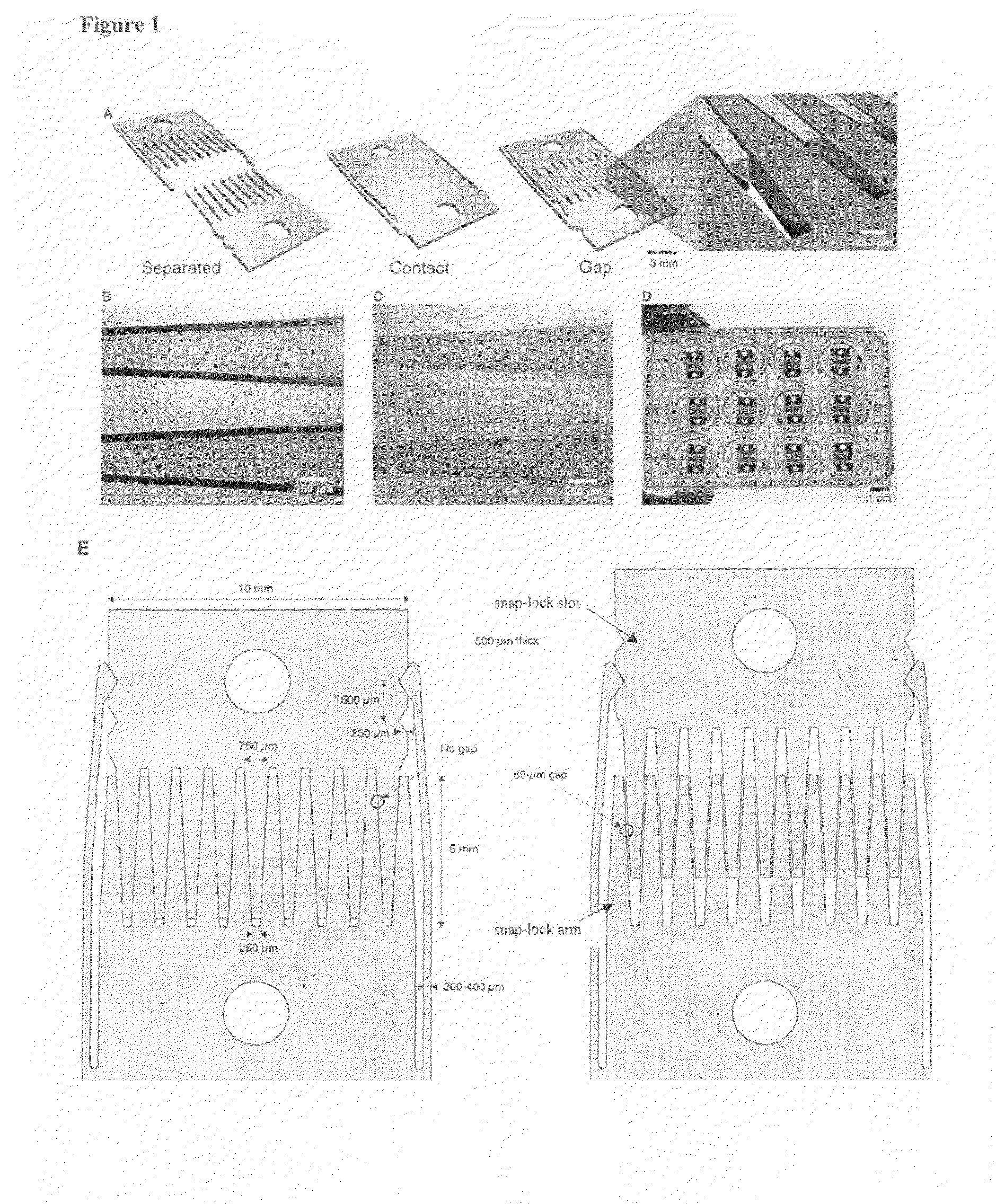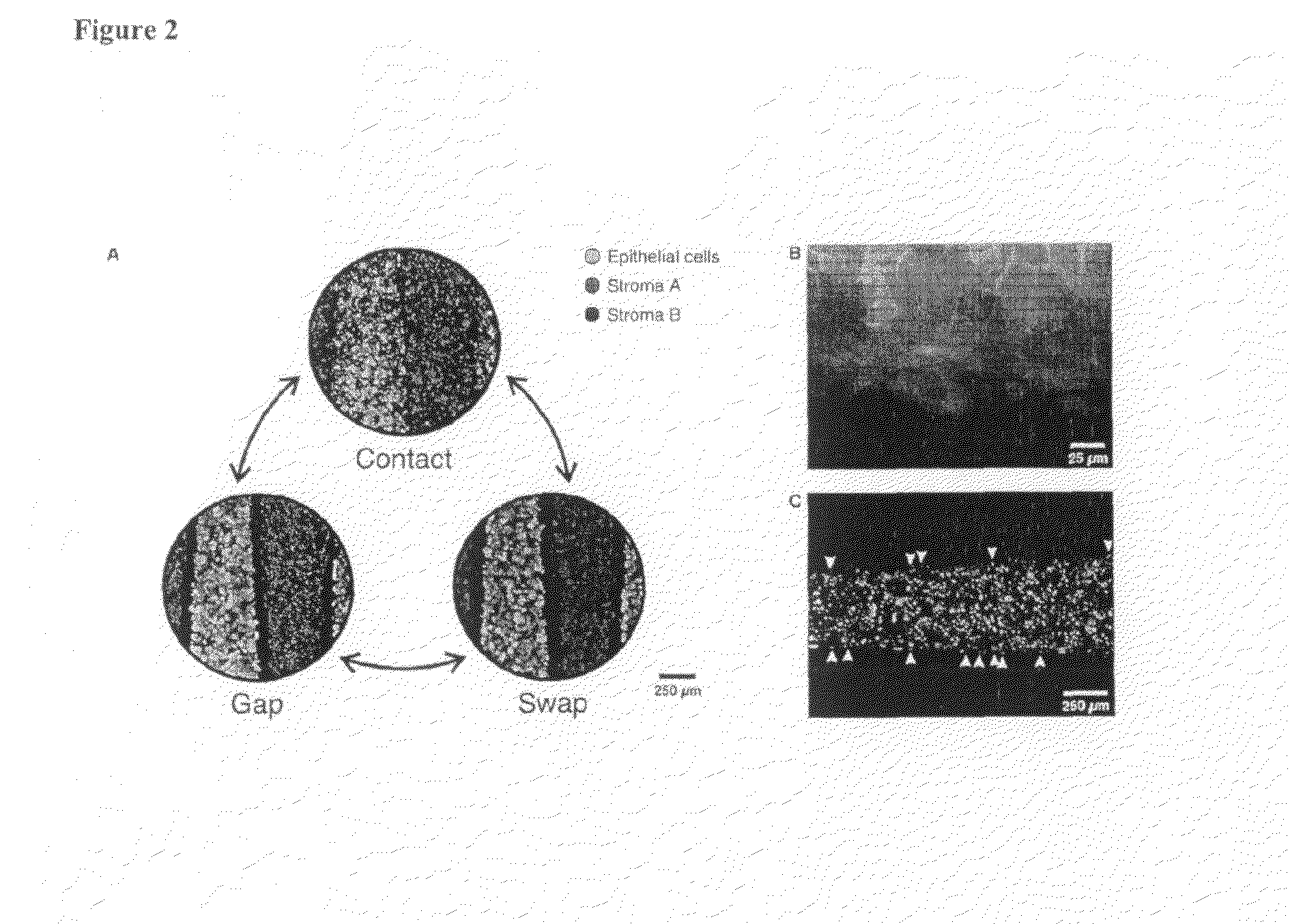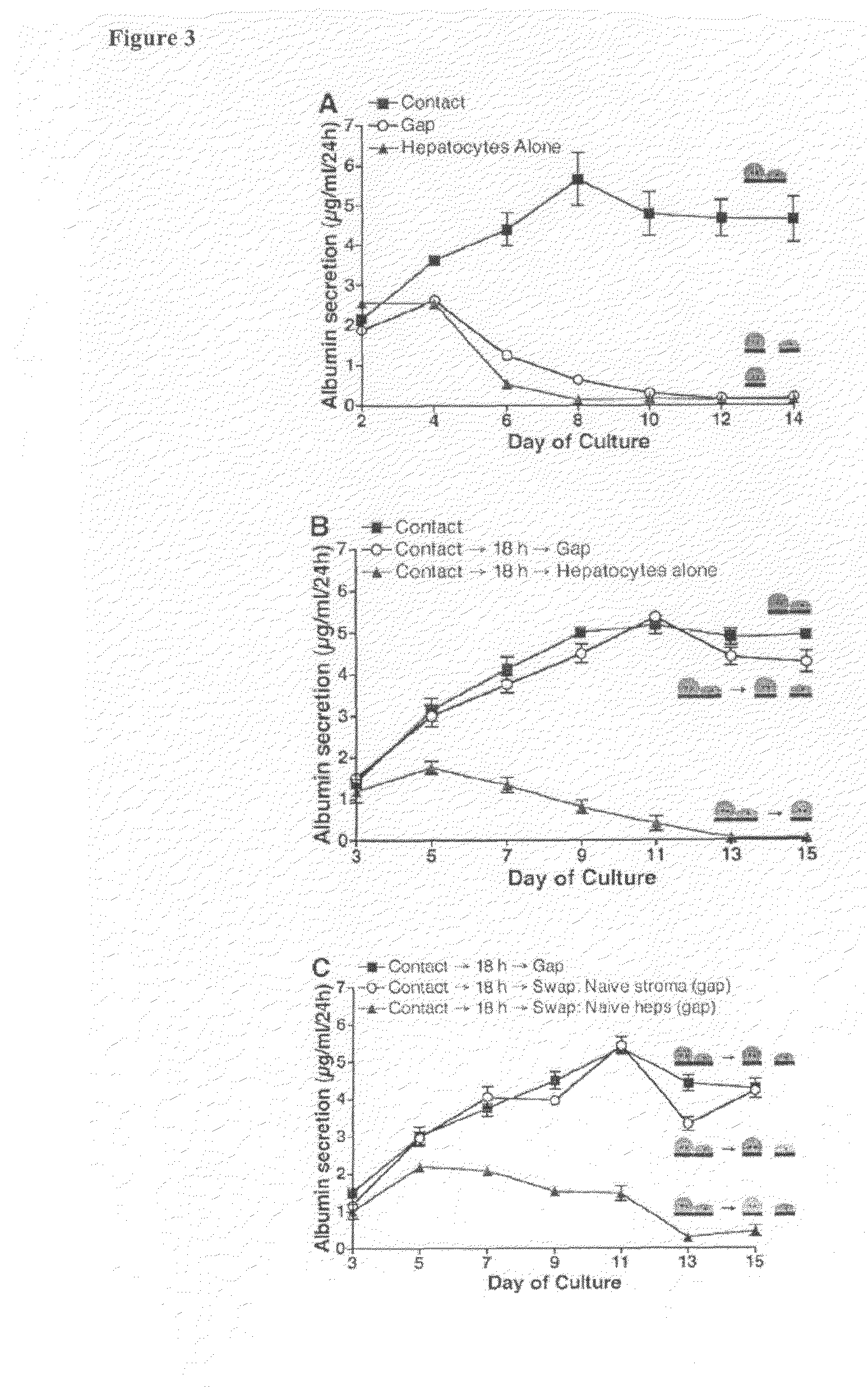Micromechanical devices for control of cell-cell interaction, and methods of use thereof
- Summary
- Abstract
- Description
- Claims
- Application Information
AI Technical Summary
Benefits of technology
Problems solved by technology
Method used
Image
Examples
Embodiment Construction
[0022]Overview. Cellular behavior within tissues is driven by environmental cues that vary temporally and spatially with a granularity on the order of individual cells. Local cell-cell interactions via secreted and contact-mediated signals play a critical role in these pathways. In order to study these dynamic small-scale processes, herein is disclosed a micromechanical platform to control microscale cell organization so that cell patterns can be reconfigured dynamically. In one embodiment, this tool has been employed to deconstruct the mechanisms by which liver-specific function is maintained in hepatocytes upon co-cultivation with stromal support cells. Specifically, the relative roles of cell contact and short-range soluble signals, duration of contact, and the possibility of bi-directional signaling were examined. In another embodiment, this tool has been used to investigated microenvironmental regulation of the sinusoidal endothelial cell phenotype.
[0023]In certain embodiments,...
PUM
 Login to View More
Login to View More Abstract
Description
Claims
Application Information
 Login to View More
Login to View More - R&D
- Intellectual Property
- Life Sciences
- Materials
- Tech Scout
- Unparalleled Data Quality
- Higher Quality Content
- 60% Fewer Hallucinations
Browse by: Latest US Patents, China's latest patents, Technical Efficacy Thesaurus, Application Domain, Technology Topic, Popular Technical Reports.
© 2025 PatSnap. All rights reserved.Legal|Privacy policy|Modern Slavery Act Transparency Statement|Sitemap|About US| Contact US: help@patsnap.com



